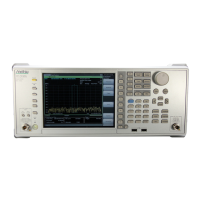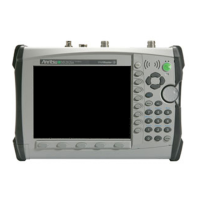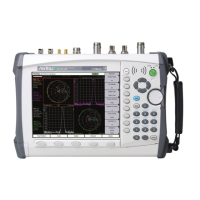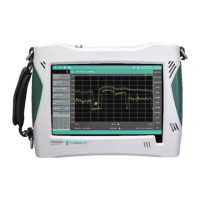Section 8 Status Structure
8-6
8.2.2 Device dependent summary message
IEEE 488.2 does not define whether status register bit 7 (DIO 8) and bits 3 (DIO
4) to 0 (DIO 1) are used as status register summary bits or the bits indicating
existence of data in the queue. Accordingly, these bits can be used as device
dependent summary message bits.
Device dependent summary messages have a register model or queue model sta-
tus data structure. This status register is a pair of registers used to report events
and states in parallel or a queue used to report states and information sequentially.
The summary bit provides a summary of the current status of the corresponding
status data structure. For the register model, the summary message bit becomes
true when one or more events have become true with occurrence of events en-
abled. For the queue model, the summary message bit becomes true when the
queue is not empty.
The MS9710C does not use bits 7, 1, and 0 and uses bits 2 and 3 as status register
summary bits. So the register model has four types of status data structures (two
extended status data structures), and the queue model has an output queue (no
extended status data structure).
7
ESB
MAV
3
2
1
0
MSS 6 RQS
Standard event
register
Status summary
message
Status Byte Register
……Output Queue
Extended event
register or queue
Extended event
register or queue
Extended event
register or queue
Extended event
register or queue
Extended event
register or queue
(Queue is not used)
(Queue is not used)
(Not used)
(Not used)
(Not used)
Service request
occurrence
Data
Data
Data
Data
Data

